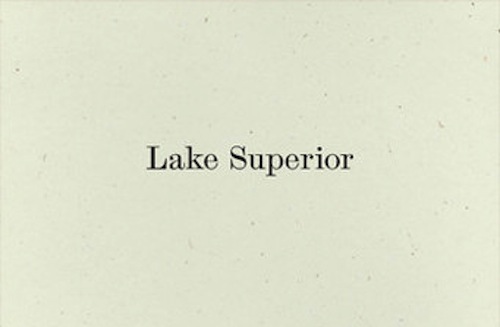Poet David Wojahn on Wave Books, Robert Lax & Lorine Niedecker

At Numéro Cinq, poet David Wojahn has penned an essay likening Wave Books to the salad days of Grove Press and New Directions, then steers his gratitude toward Lorine Niedecker and Robert Lax, whose Selected Poems 1962-1997 was edited by Lax's former assistant, John Beer, and published last November. "Wojahn has read long and thought deeply; it’s terrifically bracing to absorb his fluency with poets and traditions, the ease with which he epitomizes lives, works and influences. Such brevity and compression only comes with the profound familiarity and respect. I don’t think it takes a poet to read a poet, but Wojahn makes a good case." On the look and feel of Wave:
It was not just their discerning eclecticism that made New Directions and Grove great publishing houses; it was also the fact that the offerings of both presses had a look. New Directions titles favored eerily murky covers—the jacket descriptions as often as not printed in white ink against black backgrounds—and photos of often unrecognizable objects that looked vaguely cubist. When you looked at the cover of a book such as the New Direction translation of Sartre’s Nausea—with its badly superimposed photos of two hipster-ish men who seemed to be suffering from the effects of arsenic poisoning—even the uninitiated reader could tell that angst and dread were likely to ooze from every page. New Directions books seemed designed for two purposes—they wanted to make you take the book very seriously, and they wanted you to know that if the book didn’t look depressing, then it clearly wasn’t serious. The Grove titles were a little more colorful and lively, and were often illustrated with drawings that has a vaguely De Stijl look. They screamed modernity, much in the way the covers those classic Be-Bop albums from Prestige and other labels did.
Well, Wave publications have a signature appearance too. Like the classic New Directions and Grove covers, Wave’s dust jackets and covers are very adamant about projecting That Serious Look. The book designs are as minimalist as they come—there are apt to have no cover illustrations: we get a title, the author’s name, the book’s price, and most astonishingly of all, no blurbs. Yet there’s certain elegance to a Wave collection; the pages and covers are printed on high quality cream paper, and many are hardcovers. When you take off the book jacket, you find that the boards are colored with the same quite luscious shade of ivory.
But Wave has a list to match its Look, and its titles are almost as eclectic and discerning as those issued by Grove and New Directions during their heyday....
Wojahn moves into an elaboration on Lax and Niedecker, working with them here as "hermit poets." On Lax, who was born in 1915 and spent "most of the last four decades of his life in self-imposed retreat from the world, living in sometimes abject poverty on various Greek Islands":
I think it’s best to see Lax as extending a tradition of devotional poetry that in the West begins with the Homeric Hymns, continues through Metaphysical poets such as Henry Vaughn and George Herbert–Herbert also penned shaped poems, “Easter Wings” being the most notable example—reaches the threshold of modernism with Hopkins, and continues through figures such as Paul Celan. Lax is of course much more whimsical than these writers, but no less earnestly devout. The book-length sequence Sea and Sky, published in 1965, is Lax’s masterwork, and is best seen as an impish set of spiritual exercises. The verticality of the lines, the drone-like repetitions–sometimes reiterated exactly for several pages, sometimes containing very subtle variations in wording or stanza formation—are highly incantatory. But this effect is achieved through nothing resembling meter or traditional concepts of free verse lineation. It’s instead the mantra-like recurrence combined with the visual effect of Lax’s “columns” that makes the sequence memorable.
You must go here to see the columns, which are impressive. Wohajn's writing on Niedecker leans a bit crass, however, e.g.: "After being knocked up by her literary mentor Louis Zukofsky...." and "Matrimony even enabled Niedecker to travel"; he also misspells Jenny Penberthy by a lot, and is hopeful that the invisible Editor of Lake Superior will come forth. Regardless:
But is a poem of only six pages, “pocket epic” though it may be, significant enough to warrant an additional eighty-two pages of supplemental material, including not only the Crase essay, but the travel journal Niedecker kept as she made notes for the poem, writings by the explorers Radisson and Schoolcraft, a section of Basho’s Back Road to Far Towns (a possible inspiration for Niedecker’s travel journal), letters to her fellow poet Cid Corman that were composed shortly after Niedecker’s road trip, and a mediation on the extinction of the passenger pigeon drawn from Aldo Leopold’s classic volume of lyrical nature writing, A Sand County Almanac? My answer to this question is an unequivocal yes.


